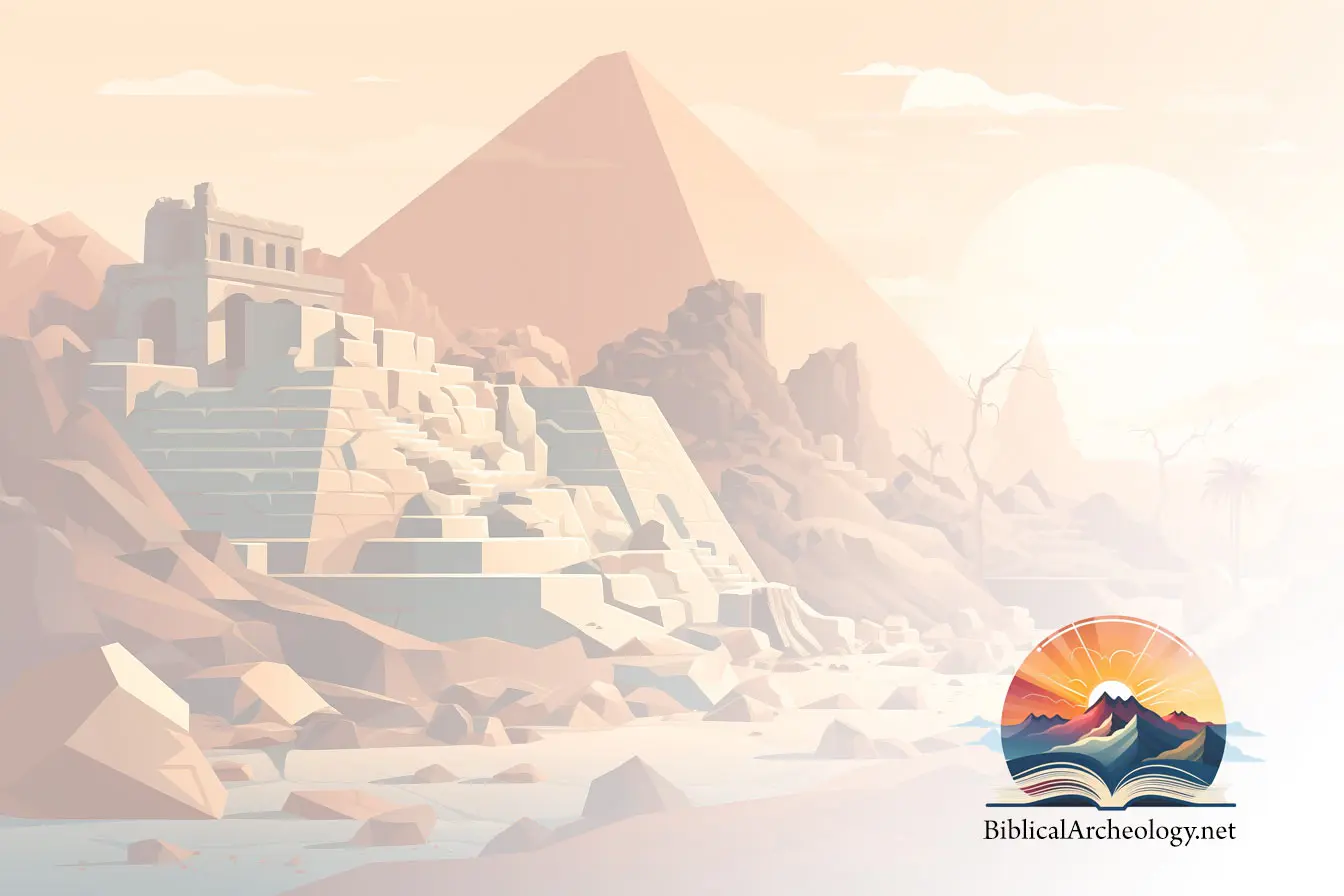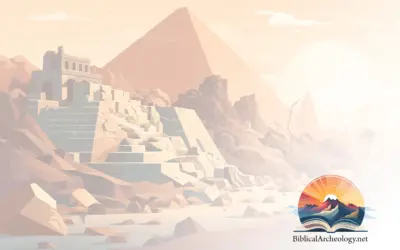These Articles Are Reproduced With Special Permission From Archeological Diggings Magazine
For More Information And A Subscription, Please Visit www.DiggingsOnline.Com
One of the few pleasures – and there aren’t many, I can assure you – of the road between Amman and Petra is seeing the Hijaz Railway a quarter of a mile away on the left. With so little else to look at, it is easy to fall into a reverie and imagine a string of camels racing across the sand and Lawrence of Arabis in his white abba setting a tulip mine beneath the ties while his horde of ruffians keep watch for an approaching Turkish patrol.
It is odd to think that Lawrence may have gained his taste for this particular pasttime while wandering in the Wilderness of Sin.
Not everyone knows that before war broke out, T. E. Lawrence was a respected young archaeologist, working with Leonard Woolley at Carchemish in northern Syria. While they were excavating there – and, incidentally, keeping an eye on the progress of the Berlin to Baghdad railway and its German engineers – Lord Kitchener, the British Agent in Cairo realised that while there were good maps for most of Sinai and Palestine, a huge triangle covering what is today called the Negev was unmapped.
Although the British had a fairly free hand in Egypt and, to a certain extent, in Sinai, which was largely dependent upon Egypt, Palestine was ruled by the Turks, who favoured the Germans and, in the tense atmosphere of 1913, were unlikely to take kindly to British army officers wandering around in their territory making maps. Exploration for religious and archaeological reasons, however, was a different matter, and so Lord Kitchener contacted the Palestine Exploration Fund (PEF). Sir Frederic Kenyon (father of Dame Kathleen) was amenable and Lawrence and Woolley, squatting happily on their cool mound up near the Habur River, received a summons to come down to the scorching heat of the Negev and conduct an emergency survey.
The Carchemish expedition was financed by the British Museum, so a certain amount of explaining was required, but with officialdom to back them up, the PEF succeeded in getting the two to forsake their real interest and undertake a seven-week long survey of archaeology in the Negev. The reason the PEF gave for its sudden interest in this desolate region is the fact that the area is mentioned in the Bible as “the Wilderness of Sin” or “Zin” and was the presumed location of Kadesh Barnea, an oasis where the Israelites had spent considerable time on their Exodus out of Egypt.
They were aided by a couple of Arabs; Dahoum was Lawrence’s assistant at Carchemis and had been trained by him to do photography (no simple matter in those days of glass plates and long exposures) and take squeezes (thin papier mache casts); Yusuf Canaan had worked for the PEF with Macalister at Gezer. In addition there was an anonymous band of Arab servants, camel drivers, water carriers, cooks and so on.
The discoveries they made were interesting rather than startling. They found nearly forty new inscriptions, including one by the Nabatean king Aretas. They concluded that the climate had never changed and that the cities which sprang up, particularly during the Byzantine Era, had subsisted by means of careful and ingenious water management techniques first used during the Iron Age.
Less welcome was their assessment of Ain Kadesh, which they concluded was too poor a spring to have ever supported a large population such as the hordes of Israelites. Either it was not the Biblical Kadesh Barnea or the Israelite encampment had been spread over a much wider area than anyone had suspected.
One of the places that Lord Kitchener particularly wished to have investigated was the fortress of Jezirat Farun, which dated back to Crusader times. The Turks refused point blank to allow Lawrence and Woolley access to what was, after all, a fairly strategic fortress. Fortunately the place was several miles down the coast from the Turkish base at Aqaba and Lawrence found some rusty old water tanks on which he was able to paddle across to the island. (Why he didn’t just swim I do not know. The distance is not that great.)
He was rather disappointed by what he found. As a fortress it was well past its prime and offered no real threat to any army or navy that might choose to venture near it. It wasn’t even interesting archaeologically!
When, in June 1914, the two returned to Britain to write up their reports of both Carchemish and the Wilderness of Zin survey, they had so much to communicate that the latter report threatened to be far longer than the War Office was willing to subsidise. Lawrence suggested that the Byzantine Period should be omitted – most people were not interested in Byzantium, for some strange reason – declaring that it was, in any case, “bad Byzantine”. Fortunately Woolley disagreed and Byzantium was kept in.
Today we view the report and its accompanying photographs as a most important document, giving a unique view of what the Negev looked like before the modern era. Many of the ruins that today are little more than heaps of stone were, then, still standing impressivly. The report is so important that, after being out of print for many years, it is being reprinted in a facsimile edition by the PEF. A separate volume is planned to bring the story of exploration in the Negev up to date. It can be obtained from Stacey International in London for £25, e-mail orders to
In December 1914 both Lawrence and Woolley returned to the Middle East, to Cairo where they were to serve in military intelligence. Lawrence, however, could not forget the happy days he had spent roaming the desert with a few native companions, far from the eye of authority, with no responsibility other than to complete his task. When a chance came to go back out into the desert and liaise with the Arabs of the Hijaz, he leaped at it – and the rest is history.
A few months later he was back in Aqaba, this time as its conqueror. There is no indication, however, that he paid a more formal visit to the fortress on Jezirat Farun. The castle really was not very interesting!
February 2004


